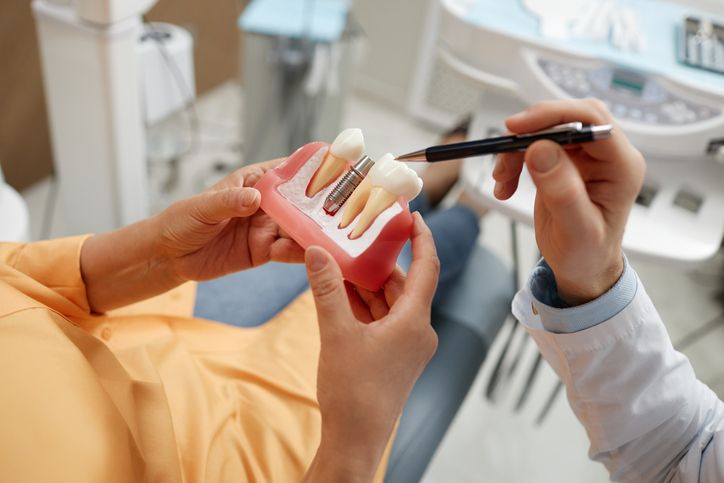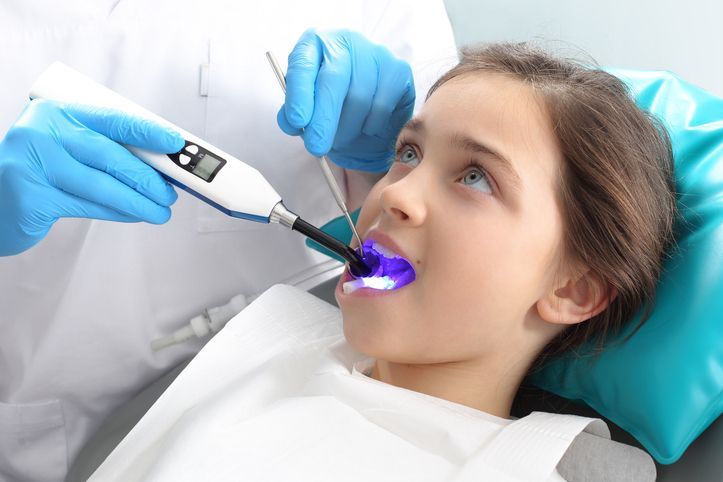Dental Emergency? (724)942-8300
Keep Your Smile Radiant Post-Braces Care
Congratulations! After months or even years of wearing braces, you've finally achieved that perfect smile. It's an exciting milestone, but the following steps are equally important. Maintaining your new smile requires diligence and care. In this blog post, we'll provide practical tips for post-braces care to ensure your beautiful smile lasts a lifetime.
The Role of Retainers
Why Retainers Are Essential
Your teeth naturally shift back to their original positions after braces come off. This is where retainers come into play. Retainers help keep your teeth in their new, perfect alignment. Wearing them as prescribed by your orthodontist is crucial to maintaining the results you've worked hard to achieve.
In most cases retainers should be worn full-time for the first six months to a year, after which they can be worn only at night. However, this may vary depending on your case, so follow your orthodontist's instructions.
Types of Retainers
There are two primary types of retainers:
Fixed Retainers:
A fixed retainer is bonded to the back of the teeth, usually in the front of your mouth. They are great because they don't require you to remember to put them in or take them out. However, they do require careful cleaning to avoid plaque buildup.
Removable Retainers:
Removable retainers come in different types, such as Hawley and Essix retainers. Hawley retainers are composed of plastic and metal wires, while Essix retainers are clear and fit snugly over your teeth. As your orthodontist advises, both types need regular cleaning and should be worn consistently.
Oral Hygiene After Braces
Daily Dental Care Routine
Maintaining excellent oral hygiene is more important than ever after braces. Here's how you can keep your new smile healthy:
Brushing:
Brush your teeth twice daily with a fluoride toothpaste. Be sure throughly to brush all surfaces of your teeth. This includes the areas where braces were attached.
Flossing:
Flossing is critical for removing any food particles and plaque from between your teeth. To make the process easier, use floss threaders or special orthodontic floss.
Using Mouthwash:
Rinsing with an antibacterial mouthwash helps reduce plaque and keeps your breath fresh. It also reaches areas that brushing and flossing might miss.
Special Considerations
Having braces can leave some areas of your teeth sensitive. Be gentle when brushing these spots, and use a soft-bristled brush. Regular dental check-ups and cleanings are essential to catch any issues early and keep your teeth in top shape.
Diet and Lifestyle Tips
Foods to Avoid
Certain foods can harm your teeth and compromise your post-braces results. Avoid hard, sticky, and sugary foods like caramel, gum, and hard candies. Pick healthier choices like fruits, vegetables, and whole grains. Try snacks such as apples, celery, carrots, and cheese. Add hummus or peanut butter for more protein and extra flavor with your celery carrot sticks!
Healthy Eating for Strong Teeth
A balanced diet that is rich in nutrients is vital for dental health. Incorporate foods high in calcium, phosphorus, and vitamins A, C, and D, such as dairy products, leafy greens, fish, and lean meats. These nutrients promote strong teeth and help maintain the integrity of your braces treatment.
Consistently drinking water will help wash away food particles and help to reduce the risk of cavities, so stay hydrated! Limit sugary drinks like soda or sports drinks, which can cause tooth decay.
Monitoring and Regular Check-Ups
Importance of Regular Orthodontic Visits
Regular follow-up appointments with your orthodontist are critical. These visits help monitor your progress and ensure your teeth remain in their new positions. Typically, you should see your orthodontist every 6 to 12 months.
Watching for Signs of Trouble
Keep an eye out for any signs that your teeth might be shifting, such as discomfort, changes in your bite, or your retainer not fitting correctly. If you notice any of these issues, contact your orthodontist immediately for advice or an appointment.
Other signs include:
Pain or Discomfort:
Braces and retainers can cause some discomfort, but if the tooth pain persists or becomes more severe, it could be a sign of trouble.
Swelling or Inflammation:
Swelling or redness around your gums or teeth may indicate infection. Your orthodontist should address this promptly.
Maintaining a Beautiful Smile
Teeth Whitening Options
Whitening your teeth can enhance your new smile. You can choose between professional whitening treatments at your dentist'sdentist's office or at-home whitening kits. Both options can be effective, but following instructions carefully is crucial to avoid damaging your teeth. Tips for safely whitening your teeth include:
Avoiding Overuse:
Follow the recommended time frame for using whitening treatments and do not exceed the suggested frequency.
Using Products Specifically Designed for Post-Braces Care:
In some cases, whitening products may contain ingredients that can damage or stain your teeth or interfere with retainer use. Avoid these products and opt for ones designed explicitly for post-brace care or sensitive teeth.
Cosmetic Touch-Ups
Sometimes, minor adjustments or cosmetic enhancements can further improve your smile. Options like veneers, bonding, and other treatments can address imperfections and give you the confidence to show off your smile.
Questions? Call Severns Dentistry & Orthodontics!
Congratulations on completing your orthodontic treatment! By following these post-braces care tips, you can maintain a healthy, stunning smile for years to come. Remember, diligent care now will pay off in the long run. If you need personalized advice or continued orthodontic care, feel free to consult with Severns Dentistry & Orthodontics. We're here to help you keep your smile radiant!
For expert guidance and to schedule a follow-up appointment, contact Severns Dentistry today.

Author:
Natalie Severns, DMD
Upon graduating from the University of Pittsburgh School of Dental Medicine, Dr. Severns specialized in Orthodontics and Dentofacial Orthopedics at the University of Pittsburgh School of Dental Medicine. She then did an externship in London, England, at the prestigious Guy’s Hospital. At this hospital, she learned top therapies in Dentofacial Orthopedics to provide her patients with the best possible facial esthetics.
Blog

©2022 Severns Dentistry and Orthodontics.
All Rights Reserved. Website Design by Higher Images










